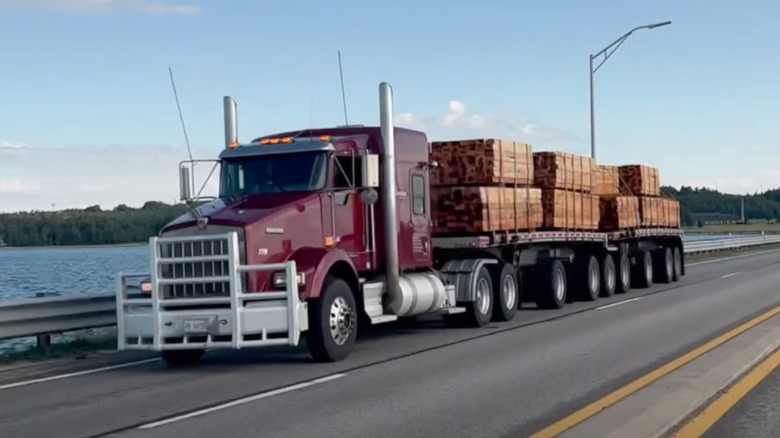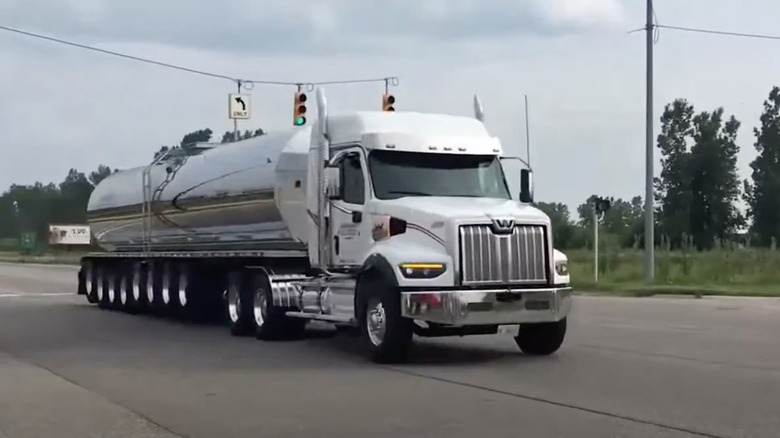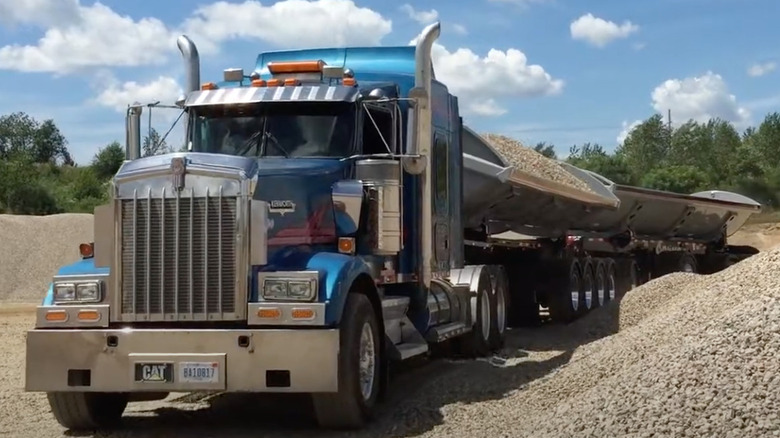Why Do Semi Trucks In Michigan Have So Many Wheels?
If you've ever driven through Michigan, you've probably noticed something unusual about the semi-trucks on the road. Unlike trucks in other states, Michigan's semis often feature an unusually high number of axles (sometimes as many as 11!). These massive vehicles, commonly referred to as "Michigan Trains," are a product of the state's unique weight laws. While federal regulations limit trucks to a gross vehicle weight (GVW) of 80,000 pounds with five axles, Michigan allows up to 164,000 pounds, so long as the weight is distributed across more axles. This law, established specifically to accommodate Michigan's high volume of freight transport, allows industries to move more goods in fewer trips while actually reducing the impact on the roads in the process.
Michigan's extensive network of lakes and shipping ports contributes to the need for these high-capacity trucks. With easy access to Great Lakes Michigan, Huron, and Erie, massive quantities of goods (such as steel, lumber, salt, and fuel) are transported through the state every day. Instead of breaking down these shipments into multiple smaller loads, Michigan's trucking industry takes advantage of its weight laws to streamline transportation. This unique system helps ensure goods move efficiently from ports to their final destinations, such as auto plants, construction sites, or miscellaneous retail locations.
Efficiency and road impact
At first glance, allowing nearly double the weight might seem like a recipe for disaster on busy highway roads. However, studies have shown that Michigan's axle-based weight distribution system is actually beneficial. Instead of concentrating weight on just a few axles, these trucks spread the load across more points of contact with the road, reducing wear and tear in the process.
Engineers and state transportation officials argue that pavement damage is primarily caused by axle loading rather than total truck weight. Michigan's 11-axle trucks typically carry only 13,000 pounds per axle, compared to 17,000-18,000 pounds per axle in other states. This means that, counterintuitively, Michigan's heavier trucks cause less damage per axle than their lighter counterparts in other states.
However, some truck drivers see things in a different light. Many argue that Michigan's poor road conditions are due more to freeze-thaw cycles and lack of maintenance than to the weight of heavy trucks. Michigan experiences extreme seasonal shifts, which cause roads to crack and deteriorate more rapidly than in warmer climates. Additionally, some drivers claim that improper axle use (such as forgetting to lower certain trailer axles) can concentrate weight unevenly, leading to localized road damage.
Economic advantages and industry impact
Nevertheless, the use of high-capacity trucks in Michigan offers significant economic benefits for the state. The Michigan Department of Transportation (MDOT) has found that these multi-axle trucks make industries more competitive by lowering freight costs. Fewer trucks are needed to transport the same amount of goods, leading to reduced fuel consumption, lower emissions, and less congestion on the roads. Some estimates suggest that shipping costs for industries utilizing these heavier trucks can be up to 50% lower than in neighboring states.
One challenge, however, is that many Michigan truckers face fewer backhaul opportunities. Because of the state's unique freight patterns, many trucks haul one-way loads (such as logs to lumber mills or gasoline to retail stations) without a return shipment. This results in empty return trips, making efficient freight movement even more essential. By allowing semi-trucks to haul larger loads in a single trip, Michigan's weight laws help offset the economic drawbacks of these empty return journeys.
While Michigan remains the only state to fully embrace these multi-axle configurations, other states are starting to take notice and explore similar policies. Some regions have begun testing increased weight limits on select routes to evaluate potential benefits. If these trials prove successful, Michigan's model could influence nationwide trucking regulations in the future.


